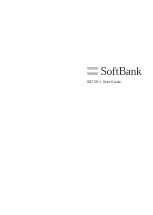
IP Telephony
IP telephony (Internet Protocol telephony) is a
general term for the technologies that use the
Internet Protocol's Packet-switched connections
to exchange voice, fax, and other forms of
information that have traditionally been carried
over the dedicated circuit-switched connections of
the public switched telephone network.
PSTN
The PSTN (public switched telephone network)
refers to the world's collection of interconnected
voice-oriented public telephone networks, both
commercial and government-owned. It's also
referred to as the Plain Old Telephone Service.
UTP
Unshielded twisted pair is the most common
kind of copper telephone wiring.
Twisted pair is the ordinary copper wire that
connects home and many business
computers to the telephone company.
Jitter
Jitter is the deviation in or displacement of
some aspect of the pulses in a high-frequency
digital signal. As the name suggests, jitter can be
thought of as shaky pulses. The deviation can be
in terms of amplitude, phase timing, or the width
of the signal pulse.
VoIP
VoIP (voice over IP - that is, voice delivered
using the Internet Protocol) is a term used in IP
Telephony for a set of facilities for managing
the delivery of voice information using the
Internet Protocol(IP). In general, this means
sending voice information in digital form in
discrete Packet rather than in the traditional
circuit-committed protocols of the public
switched telephone network.
LAN
A local area network (LAN) is a group of computers
and associated devices that share a common
communications line and typically share the
resources of a single processor or server within a
small geographic area (for example, within an office
building).
MAC address
On a local area network (LAN) or other network,
the MAC (Media Access Control) address is
your computer's unique hardware number. (On
an Ethernet LAN, it's the same as your Ethernet
address.) When you're connected to the Internet
from your computer (or host as the Internet protocol
thinks of it), a correspondence table relates your IP
address to your computer's physical (MAC) address
on the LAN.
Page 68

































